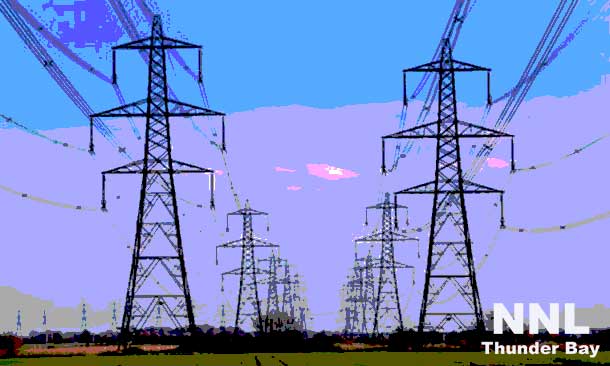
QUEEN’S PARK – LEADERS’ LEDGER – Queen’s Park is back in session this week. Kids are just back at school. We’re in the middle of the always spectacular Toronto International Film Festival (TIFF). We’re still coming off of the high of the Pan and ParaPan American Games, and the Blue Jays are heading into a great October this year.
But I’m here this evening to talk about the tremendous innovation, progress and excitement in Ontario’s energy sector, led by many of the people in this room.
Two years ago, when I spoke at this conference, we were finalizing our 2013 Long -Term Energy Plan. And OEA members helped us develop an outstanding blueprint for moving our energy system forward.
You may remember, last year, I spoke to the ways we’re moving forward on these commitments, including:
- Ontario’s procurement and market evolution;
- the priority we’ve put on innovation in conservation programs; and of course
- Ed Clark’s panel on asset modernization, the Hydro One IPO and Hydro One Brampton
When I spoke to you last year, some of our Long Term Energy Plan’s recommendations had yet to be implemented; CDM frameworks had not yet started to be formulated and IESO and OPA were still preparing for their merger – nor was the Brampton amalgamation or the Hydro One IPO ready for implementation.
Tonight, I would also like to provide an update on the core themes that I discussed last year as well as highlight how our Government is successfully working to expand the national energy dialogue as it relates to interprovincial electricity trade and our responsibility to Aboriginal communities.
For those of you following these topics closely this past year, you know there is a great deal of progress.
As we all know well, clean, affordable and reliable power is central to supporting businesses, creating good jobs and building a stronger economy.
And everyone in this room is aware that over the past ten years, Ontario has rebuilt and dramatically reformed our electricity system, with investments exceeding $35 billion.
Together, we eliminated coal fired generation and integrated significant new wind and solar resources to green our fleet.
This remains the single largest climate change initiative in North America and is independently estimated to mitigate about $4-billion annually in avoided health care and environmental costs.
This puts Ontario’s energy sector in an extremely strong position as we move forward with our provincial and global partners towards a cap and trade system. Another excellent reason to be off of coal.
We’ve deployed smart grid infrastructure that enables cutting edge new technologies to manage our energy use which helps drive the development of new, high-skilled jobs in the smart grid and clean tech sectors.
Everyone in this room knows that a smarter grid means system-wide benefits, including increased conservation, fewer service disruptions, lower greenhouse gas emissions, less wasted energy, lower operating costs and more job growth.
And the smart grid is driving research and development, innovation, investments and efficiencies in our energy sector.
Ontario is now directly supporting 28 Smart Grid projects. And you, the industry, are supporting many more.
Leveraging private sector investment by well over three to one, Ontario’s funding of the smart grid is leading to new solutions that will increase reliability, flexibility and responsiveness to meet the demands of tomorrow.
These important and necessary investments, however, have placed significant cost pressure on Ontario’s rate base.
And so, as we have been moving forward, the primary motivation for the Ministry of Energy and our Energy Agencies has been and will continue to be to ensure a sharp and renewed focus on cost containment and rate mitigation and greenhouse gas reductions. That will mean that some important conversations will need to occur in the months and years ahead.
As a result of Ontario’s strong supply situation and the goal of moving towards a competitive, capacity procurement model, the former practice of sole-sourced, direct negotiations with non-utility generators, or NUGs, will come to an end.
These existing NUGs whose 20-year contracts expire in the years ahead will now need to compete for re- contracting using capacity procurements to ensure best value for ratepayers.
Simply put, for these facilities, moving forward – the price must meet or beat the competition.
When you’re bidding power into the grid, it must be on commercial terms, in the interest of our ratepayers.
And in recognition that not all such facilities can be re-contracted, the IESO is already seeking to amend Ontario’s market rules to allow for domestic generating facilities, including NUGs, to bid firm capacity exports into our neighbouring jurisdictions – adjusting a practice that has long lead to contractual unfairness and potentialy stranded assets.
This policy for NUGs relates to IESO’s ongoing and upcoming renewable energy procurements, with new competitive tension and price bid down tools that haven’t been used in the past but will now become the norm.
Contract rules and terms that reduce risk for IESO and protect ratepayers have been introduced and will continue to be explored.
And we are counting on many of you to help lead by showing that transition can work.
We can have some collective confidence that with the cost of renewable technologies dramatically falling in price and with the maturity of our domestic supply chain, Ontario’s local energy developers are already on their way to beating targets, innovating and succeeding.
Those are two examples of how our procurement practices and market systems can and must evolve to serve the needs of today’s ratepayer.
In the years ahead, some of the most important innovations we are starting to see will fundamentally reshape the way that our electricity system functions.
Firstly, the single most important conversation we can have with customers is going to be about energy conservation.
The expansion of our Conservation and Demand side management programs will represent an important milestone in our Government’s “Conservation First” doctrine.
We’ve had some successes to date.
Very recently, the IESO reported on the 2011-2014 conservation results which show that Ontario’s LDCs made significant gains and achieved:
- 109% of the energy (reduction) target; and
- 70% of the peak reduction target at 928 MW
And tonight we want to specifically recognize Guelph Hydro and Kingston Utilities – LDCs that surpassed both their capacity and energy reduction targets. These utilities are showing that “it can be done”.
They are proving that the single most cost-effective resource, in many cases is and will continue to be conservation.
And we know IESO is still reviewing and approving some of these new framework products, but we’re especially excited by the innovative and unique CDM programs that will soon be launched. LDCs are now mandated to deliver a suite of conservation programs directed towards all customer classes.
Examples under development include:
- Enersource’s – Whole Home Program: Customers will receive energy audit report for improvements along with a menu of available incentives and can pay on their own OR go through on-bill
- Hydro One – Air source Heat Pumps: Customers with electric baseboard heat will receive an incentive toward the installation of an air source heat pump system to dramatically reduce the price of home heating and
- Commercial and business programs are being proposed that could be province wide or local in nature.
- And several LDCs are proposing to expand on the commercial lighting retrofit programs that offer incentives for business to upgrade their in store lighting
Some additional programs under development include industrial refrigeration upgrades and chiller conversions that will help lower air conditioning and refrigeration costs without compromising product security.
Examples of regional programs include specific Hotel / Motel conservation plans in Niagara Falls – a hot bed for tourist activity.
Taken together, programs like these and many others will help ensure that customers large and small have access to programs to help manage their electricity bill, reduce consumption and provide overall system benefit for everyone.
Working together, these initiatives will continue to drive down ratepayer costs.
A very significant part of our Government’s effort to modernize the grid and ensure that costs are contained for Ontario ratepayers, means that we are evolving our ownership position in Hydro One.
There is a serious infrastructure deficit right across Canada, including in Ontario. So the net proceeds from the immenent Initial Public Offering will be dedicated to the Trillium Trust and be part of the largest investment in infrastructure in Ontario’s history – more than $130 billion over ten years, which will support more than 110,000 jobs per year on average.
Premier Wynne is leading in Canada with her commitment to a strong and meaningful dent in Ontario’s infrastructure defecit. Something that is long overdue and will enhance both our quality of life and our economic competitiveness.
It is important to note that investing the IPO net proceeds in infrastructure provides us with infrastructure funding that does not come from taxes, debt, or cutting essential services.
So the Premier is building this province up without deep cuts to programs or new taxes on hardworking families. We are finding innovative ways to fund the investments that Ontarians gave Ontario Liberals a mandate to make, in the case of Hydro One, by re-purposing a portion of a provincial asset.
And we are taking strategic measures to ensure accountability through legislation and governance provisions. We have passed a legislative requirement that the government will remain the single largest shareholder at a minimum 40% stake, and – by law – require that no other shareholder be permitted to hold more than 10 per cent.
We’ve ensured the government will have certain powers relative to the Board of Directos if needed and will always maintain a minimum of 40% of the Board seats.
To focus a priority on the customer, Hydro One is appointing a dedicated Ombudsperson, similar to those found at other public companies, who will help to ensure customers have a strong voice and are respected, and our new Bill 112 will enhance consumer protection.
In July, the province appointed a new board of directors for Hydro One, to oversee the company as it prepares to become publicly a traded TSX company.
They are a team of proven leaders, who give a renewed focus on customer service, excellence, and improved performance and reliability.
And the new CEO, Mayo Schmidt, took over just under two weeks ago and he comes with strong record and impressive career history.
This evolving role is one that will be a positive game changer for our system. And I believe one that is badly needed.
Also, as part of the 2015 Ontario Budget, our Government provided meaningful changes to end barriers that stand in the way of broader LDC consolidation.
This will ensure our system can continue to meet the electricity policy needs of the 21st Century.
The reality is that, in 2015, for Ontario to have a balkanized structure with over 70 LDCs serving 4.3 million residential customers just doesn’t make economic sense.
As outlined by the 2012 Distribution Sector Review Panel report, it’s time to park the historical reasons for this sector’s fragmentation and focus on driving efficiencies and ratepayer savings through significant consolidation.
We are certainly pleased with the promising efforts to date regarding the consolidation around Brampton.
Government is encouraged by the level of dialogue that is already taking place across the sector, meaning we can look to the future on this issue with some optimism.
And I underline, without forced or legislated consolidation.
Many of the efforts we are undertaking here in Ontario parallel a national conversation Premier Wynne and her colleagues from coast to coast to coast launched at the Council of the Federation.
Just shy of 10 per cent of Canada’s GDP is driven by the energy sector. In this reality, it only makes sense to have a truly national energy strategy.
When the Premiers launched the Canadian Energy Strategy, it was a real commitment by the Premier’s to strengthen the national economy, ensure a secure supply of energy for all Canadians, support innovation, and address climate change.
And it represents a strong and unprecedented foundation to work together on energy priorities with the shared goal of ensuring Canada remains an international leader in sustainable and secure energy production, supply and transportation. Ontario supports the Canadian Energy Strategy, and in fact, we are already seeing the results.
In July, along with our partners in Manitoba, Quebec, Newfoundland & Labrador, the Northwest Territories and the Yukon, Ontario announced a Pan-Canadian Task Force that is taking action to co- operate on reducing the use of dirty diesel fuel for electricity generation in remote Northern communities.
And just a few short weeks ago, Wataynikaneyap Power, a partnership of 20 First Nation communities, and RES-Fortis signed an unprecedented public/private partnership to connect remote First Nation communities, a project in excess of one billion dollars. We’ve long recognized the value of this project to northwestern Ontario’s remote communities by committing to it in our Long-Term Energy Plan.
In fact, to suggest that the grid connection of Ontario’s remote, north west First Nation communities is a “priority” may be too weak a term.
In 2015, in a country as prosperous as ours, we should acknowledge that tens of thousands of individuals and families not being connected to the transmission and distribution grid – is totally unacceptable.
In 2015, when members of these communities go to turn on a light switch, it should not be met with the persistent din of a dirty diesel generator.
And that an on-site diesel generator represents a denigration of quality of life and the environment.
Simply put, the lack of reliable, grid connected transmission and distribution networks for these communities limits both economic and social development priorities.
That’s why, Ontario has listed this project as a “priority” in our Long-Term Energy Plan; and is working with First Nations to implement it.
Reducing or eliminating high-cost diesel use in remote First Nation communities will make a real difference for people, would reduce harmful emissions, strengthen local economies, and create well- paying jobs – all key elements in improving quality of life for communities.
What’s more – analysis shows that grid connecting these remote communities just makes economic sense. Through analysis by the Independent Electricity System Operator (IESO), it has been estimated that up to $1 billion in savings would be generated as a result of transmission grid connection – by eliminating reliance on diesel generation for these 21 remote First Nation communities.
But, we are only going to be able to accomplish this goal if we have a Federal partner. Unfortunately the Federal Government remains absent. Of that $1-billion in savings, much of that accrues to the Federal Government; which currently funds the cost of diesel fuel shipments and infrastructure, and to date it has said no to re-investing any part of those savings into the new transmission system.
The Canadian Energy Strategy is also about looking at ways to promote the trade of clean energy between our provinces.
Building on the strategy, Ontario and Newfoundland & Labrador recently announced that the provinces will work on the possibilities of importing clean and reliable electricity through the new Maritime Transmission Link – now under construction.
A team of officials from both sides has begun to study the concept, and we look forward to receiving their report, next year, on these possibilities.
And, of course, we’re already working with Quebec to achieve shared economic goals.
The IESO and Hydro-Quebec have already signed a formal, 10-year agreement that will allow Ontario and Quebec to swap or exchange up to 500 MW of electricity at our respective seasonal peaks which are in different seasons.
And just last week in Quebec City, I was proud to join my colleague Minister Pierre Arcand to announce our collaborative efforts to expand on this capacity swap and explore further firm electricity trade opportunities between our provinces.
But let’s be very clear. While we explore energy and capacity trading with our provincial partners, we will not lock ourselves into contracts that don’t meet Ontario’s economic objectives.
The price must be lower than that which we could otherwise achieve in the wholesale market or with domestic resources.
Our Government is committed to working with stakeholders in exploring every chance to strengthen our system and reduce costs for Ontario consumers.
We appreciate that a healthy, vibrant, innovative, reliable energy sector relies on a healthy and modern industrial energy sector that strives for excellence.
And virtually everyone in this room is aware of the risk/reward paradigm in the energy sector.
And most of you are therefore riding the wave of innovation and creativity, but with a heavy dose of caution and hopefully, wisdom. We shared this reality with you as we created our current Long Term Energy Plan together.
In the not too distant future, we will be engaging our scheduled review of our Long Term Energy Plan and we will be looking forward to your comprehensive engagement once again.
To date, our evolution together includes:
- New ownership structures and broadening mandates for LDCs;
- More engagemens and partnerships with First Nations and Metis Communities;
- New technologies and innovations related to embedded generation, storage, conservation, and renewables;
- Carbon reduction technologies and regulations;
- New opportunities through more creative procurements;
- Being on the cusp of Cap and Trade, including ongoing consultations;
- Working together for responsible interventions at the NEB for Energy East;
- Transformational programs and innovations to extend natural gas services to rural and remote communities;
- Policies, programs and infrastructure related to non-carbon based fuels for vehicles;
- Expanding trade opportunities; and
- Policies, programs, and infrastructure that will mitigate rate
In conclusion, I want to state quite simply:
Thank you to all of you for contributing to Ontario’s quality of life and economy; For your ongoing leadership; and
For working together with us to continue to improve one of the best energy sectors in the world, right here in Ontario.
Thank you.





